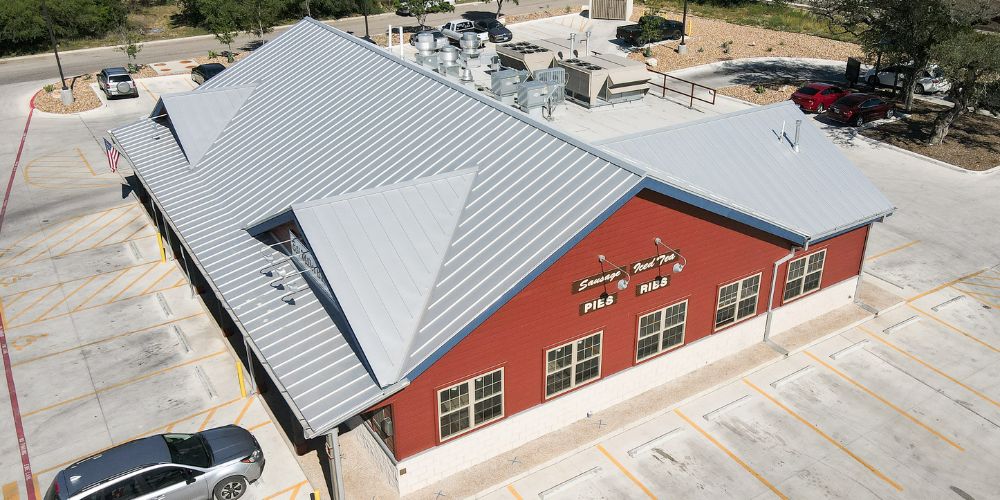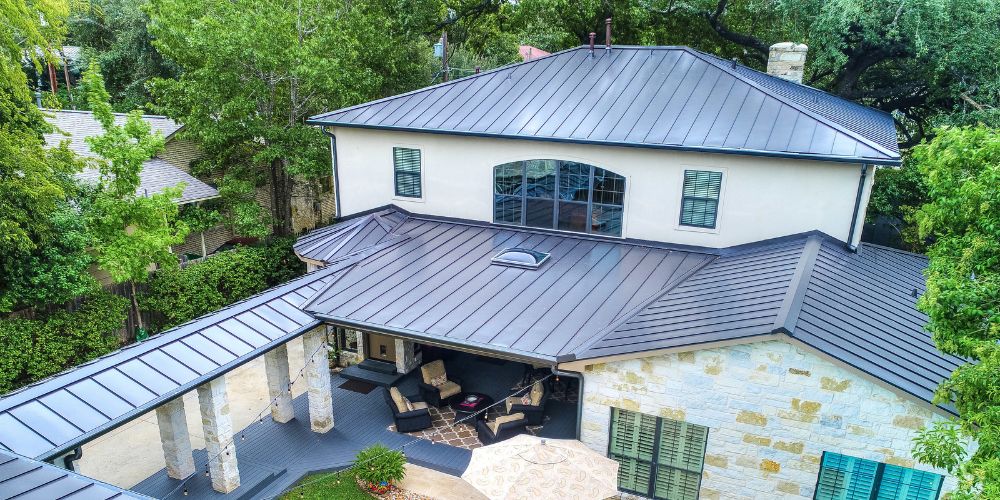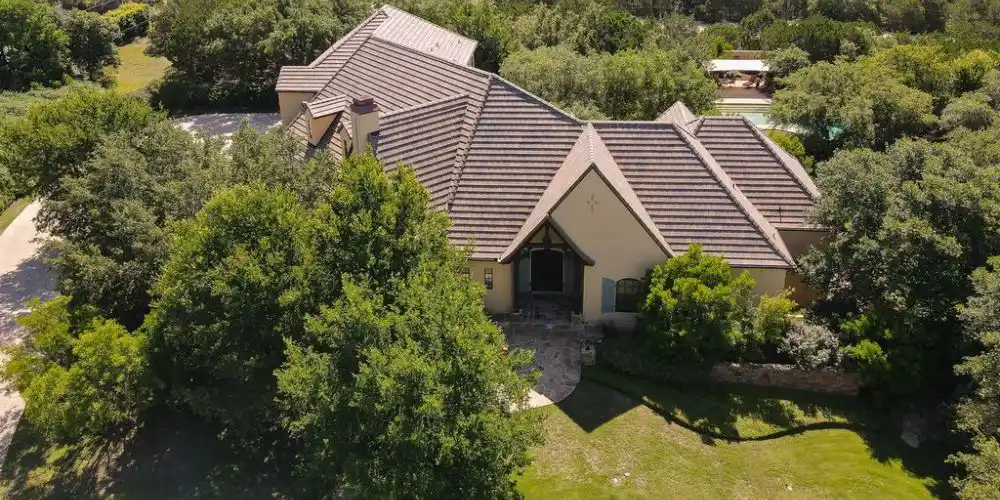A long-lasting roof saves money over time by reducing constant repair or replacement needs. With so many roofing materials, it is tough to determine which one is the longest-lasting roof material. This article will explore different roofing materials with the longest lifespan and help you understand which stands the test of time.
How Long Does a Typical Roof Last?
The general factors that define how long a typical roof lasts are material, quality of installation, and climatic conditions. Whereas some roofs take decades, others require replacement earlier. Following is the list of the most long-lasting standard roofing materials:
Slate Roof
Among roofing materials, slate lasts 75 to well over 150 years. As a stone, slate is naturally incredibly durable and resistant to fire, water, and weathering. However, slate roofing is very heavy; thus, it requires a strong support structure, adding to the installation cost.
Clay & Concrete Tile Roof

Other durable options include clay and concrete tiles, which can survive 50 to 100 years. Both are fire-resistant, and their weathering characteristics make them ideal for hot and dry areas. Although their heavyweight and expensive installation method is a drawback, they are still worth every penny since they tend to be roofing materials with the longest lifespan.
Metal Roof

The typical life of a roof, particularly copper or zinc, extends to 40 to 70 years, but they may even project beyond lengths over 100 years. Metal roofing is lightweight, resists fire, and has become a favorite because of its durability and resistance to inclement weather. It is also energy-efficient, reflecting heat and consequent cooling costs.
Wood Shingles & Shakes
Wood shingles and shakes may last 25 to 40 years, pending maintenance and climate conditions. Cedar has been used most often because of its outright resistance to rot and insects. While wood roofs offer a natural look, they require periodic maintenance to prevent decay and are less durable compared to other roofing materials with the longest lifespan, like slate or metal.
Asphalt Shingle
Asphalt shingles are relatively inexpensive and easy to install, which makes them the most pervasive roofing material in North America. However, they have a shorter lifespan of 15-30 years compared to other roofing materials with the longest lifespan. Asphalt shingles offer many style options and can withstand temperature fluctuations. Though not the longest-lasting roof material, they are a great budget-friendly choice.
Modified Bitumen
Modified bitumen is among the most sizzling roofing materials for flat or low-sloping roofs. It is made from layers of asphalt and is usually strengthened by fabrics such as polyester or fiberglass. The life span for modified bitumen roofing lies somewhere between 20 and 30 years. Modified bitumen roofing is durable and does well in waterproofing; some other flat roof materials’ service life could last longer.
TPO

TPO stands for Thermoplastic Polyolefin, a single-ply roofing membrane installed onto flat roofs. It is lightweight but quite durable, hence efficient in reflecting UV rays to keep buildings more relaxed. TPO roofs generally last 15-25 years. Not extreme in longevity, as slate or metals would be, TPO roofing is quite famous for commercial properties based on the economic benefits it reaps.
PVC
PVC or Polyvinyl Chloride roofing is another popular single-ply membrane applied to flat or low-sloped roofs. Resistant to chemicals, durable, and energy-efficient, a PVC roof may last 20-30 years. The material also withstands almost all types of weather and fire; hence, it is also a strong candidate for commercial buildings.
BUR (Built-Up Roof)
BUR, or Built-up Roofing, is a conventional flat roofing system comprising alternate bitumen and reinforcing material layers. If appropriately maintained, a BUR system may last 20 to 30 years. It is challenging and offers good resistance against water and UV rays.
So, Which is the Longest-Lasting Roof Type?
The slate is the longest-lasting roof material, considering it may last over a century. Other fantastic alternatives are clay and concrete tile, each with a lifespan of 50-100 years. Further, there is the long-lasting metal roofing type copper and zinc, sometimes running up to 100 years when installed. On the other hand, roofing materials like asphalt shingles and modified bitumen have comparatively shorter lives, yet they are cheaper.
Choosing the Best Roofing Material
Choosing the best roofing materials with the longest lifespan depends on your budget, climate, and how long you plan to stay in your home. Though some materials, like slate and clay tiles, are expensive, their longevity makes them cheaper over time. A metal roof offers an excellent balance between durability and affordability, making it an ideal option. If you’re working with a tight budget, asphalt shingles may be the answer, but they will need to be replaced within 20 to 30 years.
Conclusion
Longevity is crucial when selecting a roofing material. Roofing materials with the longest lifespan include slate, clay, concrete, and metal, all of which offer excellent durability. However, the best choice must consider cost, climate, and your specific needs.
Contact Mangold Roofing experts for advice and quality installation services if you are considering a new roof. With their expert assistance, you can choose the type of roofing material that will serve your needs and last for decades.




